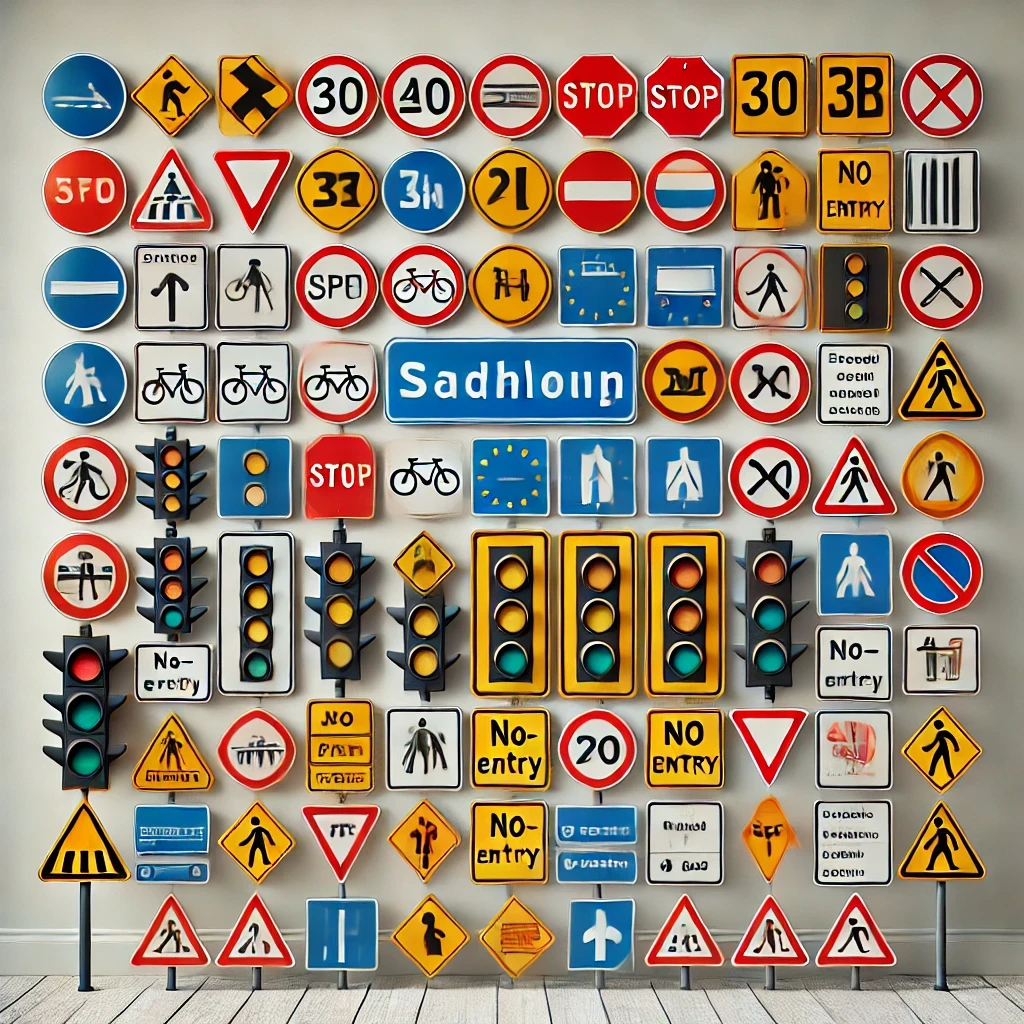Traffic signs are the unsung heroes of the road, guiding drivers, cyclists, and pedestrians safely from one place to another. Whether you’re a local driver, a tourist, or a new resident, understanding Dutch traffic signs is crucial for navigating the Netherlands’ well-organized and bike-friendly streets. In this guide, we’ll dive into what traffic signs are, explore the different types and their meanings, highlight the most common road signs, and wrap up with a handy conclusion. Let’s hit the road!
What are traffic signs and how many are there?
Traffic signs are visual symbols placed along roads to communicate essential rules, warnings, and information to all road users. They’re designed to be easy to recognize and understand, even at a quick glance.
In the Netherlands, traffic signs are an integral part of the country’s efficient transport system. They not only ensure road safety but also reflect the unique infrastructure, where bicycles share equal importance with cars and pedestrians.
How many traffic signs are there in the Netherlands?
The Dutch road system boasts hundreds of traffic signs categorized by function. Broadly speaking, Dutch traffic signs fall into:
Warning Signs
Prohibitory Signs
Mandatory Signs
Information Signs
Temporary Signs
These categories cover everything from speed limits to cyclist lanes and even parking rules. Familiarizing yourself with them is key to navigating smoothly across Dutch roads.
Different signs and their meanings
Traffic signs in the Netherlands are designed with clarity in mind, often featuring universal symbols to aid international drivers. Let’s break down the main categories:
1. Warning Signs
What they look like: Triangular with a red border.
Purpose: Alert drivers to upcoming hazards or changes in the road, such as sharp bends, railroad crossings, or slippery roads.
Example: A triangle with an exclamation mark (!) warns of general dangers.
2. Prohibitory Signs
What they look like: Circular with a red border.
Purpose: Indicate restrictions or prohibitions like speed limits, no-entry zones, or restricted vehicle types.
Example: A sign with “50” inside a red circle means a speed limit of 50 km/h.
3. Mandatory Signs
What they look like: Circular with a blue background.
Purpose: Indicate actions that must be taken, like turning left or following a specific lane.
Example: A blue circle with a white arrow pointing right means “Turn right only.”
4. Information Signs
What they look like: Rectangular, often blue.
Purpose: Provide helpful information such as road conditions, parking, or directions.
Example: A blue sign with a white “P” denotes a parking area.
5. Temporary Signs
What they look like: Often orange or yellow.
Purpose: Provide guidance during roadworks or temporary road changes.
Example: An orange sign with detour instructions.
Most common traffic signs
Now that you know the types, let’s look at some of the most commonly seen road signs in the Netherlands:
1. Speed Limit Signs
Dutch roads often have strict speed limits that vary depending on the area. For instance:
Urban areas: 50 km/h
Highways: 100-130 km/h
2. Priority Signs
These indicate who has the right of way. A yellow diamond sign signals that you’re on a priority road.
3. No Entry Signs
The iconic red circle with a white horizontal bar prohibits entry for all vehicles.
4. Bicycle Path Signs
Bicycles are kings of Dutch roads! Dedicated blue circular signs mark bike lanes, ensuring safe travel for cyclists.
5. Pedestrian Crossings
The zebra-striped pedestrian crossings are common and usually accompanied by triangular warning signs for drivers.
Conclusion
Understanding Dutch traffic signs is essential for staying safe and avoiding fines on the road. The Netherlands’ road signs are thoughtfully designed to balance the needs of drivers, cyclists, and pedestrians, ensuring smooth traffic flow and safety for everyone.
Whether you’re navigating the canals of Amsterdam or driving through the scenic countryside, keeping these traffic rules in mind will make your journey stress-free. Happy driving!
Want to get your driver's license? Check out our free trial lessons, packages and crash courses.

